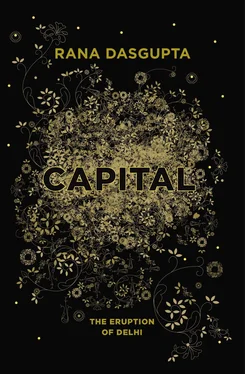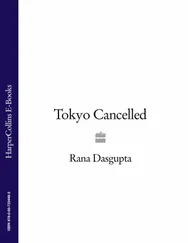In these inclusive times, it should be said, it is increasingly appropriate to address a woman as ‘bro’.
“I’ve never liked America,” says Rakesh. “I didn’t finish my studies there. I finished them in England. Plus I had family in England; in America I was very far from home. But generally I’ve never liked the American culture. It’s too opportunistic. Too lacking in culture .
“When I finished my Bachelor’s in business, I was supposed to come back from England and join my dad. But I didn’t want to come back. Luckily we had a close family friend from Delhi who ran a clothing company in Amsterdam. Very different to what my dad does and to what I’m doing now. He gave me a two-year internship over there.”
He speaks fondly about his own past. In the distance, his wife walks hand-in-hand with their toddler son around the compound’s marble paths.
“Then my dad came to Amsterdam to talk to me about coming back. I was very happy in Amsterdam but he more or less convinced me to come back. Well, not more or less . So that’s when I joined him in the automotive business. And I thought, ‘ I don’t know anything about the automotive business. ’ I told myself that the best way to learn is to actually make the product with my own hands. So I did that for exactly a year and four months. I worked as a fucking operator on the shop floor. My decision, completely my decision. Because that’s the only way I was going to learn.
“Nine months I spent in Japan. In a place called Hamamatsu, about an hour and a half from Tokyo, which is the headquarters of Suzuki. I tell you, that was my — that kind of learning I could never fathom without — I mean today, sitting here, if I hadn’t done that, I would be a different man. Unreal, man — I used to wake up at five, I had a room so small that you couldn’t fit an ironing board in it — you know, the Japs are very strict on discipline.
“The company I was working for had just begun an alliance with my dad. We had this beautiful relationship because as soon as I got there — usually the Japs are very reserved and everything — the president adopted me as his own son. My desk stood right next to his. They worked open-plan: no cubicles. This was a 300-million-dollar company at that time — I’m talking 1990. But my desk was only for writing my reports in the evening. All day I spent in the workshop, the store and all that.”
Rakesh’s family has been in the north Indian jewellery business for the last century and a quarter. He emerges from a community of traders for whom business has been far more than a means of making a living: it is an ethos, a form of life, a social identity. His merchant forebears were involved in commercial networks that extended not only across the Indian sub-continent but also along the trade routes leading west to Arabia and Africa, and east to China. These networks were constituted of singular business practices, designed to transcend the gaps of trust arising both from the fact that they comprised many different communities, religions and languages, and from the nature of the jewellery trade itself. Because of the very high value of the goods involved, there was at every link in the jewellery supply chain an issue of credit: merchants could usually not pay up-front for the goods they received. The entire transnational system therefore depended on traders handing over extremely valuable goods in return for nothing except the promise of payment in the future. The problem was obvious: how could anyone be sure that the merchant to whom one had given such credit would ever show his face again?
There were of course penalties for defaulters: the entire trading community would cooperate to ensure that such people were made to pay for their violations — or at least that they never trade in that place again. Merchants also invested heavily in their own reputations, which translated directly into commercial opportunity. They lived magnificently, so that all would know they were financially sound. They gave money to mosques and temples and the poor, they employed poets to eulogise their wealth and integrity, and they made a big show of wounded pride in their negotiations — “Me? You would think this of me ? You do me wrong.”
Most of all, however, they found ways to broaden purely commercial relationships into other forms of interdependence in order to make double-crossing difficult or impossible. They would bind their partners to them with gifts, favours and hospitality — and even through the intermarriage of their families. They would extend to each other a kind of intimacy that was spoken about in the language of friendship or even brotherhood — and indeed it had precisely those depths and qualities unless something went wrong in business. There was not really an ‘outside’ to the life of business: the household and family were set up to support and enhance it — and to provide trusted partners and heirs — while the pursuit of friendship and social life was never entirely separate from the project of cementing the relationships necessary for commerce.
Such an ethos has been modified but not replaced among the business families of this part of the world. It is striking how many of them found their inspiration in the Japanese corporations that were so significant to the development of Indian industry in the 1980s and ’90s — for, vast as these were, they worked according to small-scale principles of hospitality and loyalty that Delhi businessmen could understand and respect. American corporations, on the other hand, seemed, for all their evident dynamism, distastefully distant and ungenerous at the personal level. If contemporary Indian business can seem like a bewildering mesh of personal connections and nepotism, this is in part a legacy of once-august traditions of transnational commerce, which, though they have been overshadowed by the supposedly universal corporation, still give form to the business culture.
“My dad left the jewellery trade and ran a successful fabrics business with his brother until 1993, when they had an amicable separation: ‘You have a son, I have a son: let us go our separate ways.’ How decent is that? So my dad set up a new business manufacturing seating systems for cars. Later on he got into making automobile mirrors. Then we set up the plastics division in 1999 when I went to apprentice in Japan. He gave me full charge of setting up the plastics division and the headliner division.”
“What’s headliner?”
“It’s what you have on the roof interior. It’s like fabric but it’s not fabric. It’s a full thick composite — it’s polyurethane, it’s non-woven, it’s a lot of things — they’re sandwiched in a process, then they’re pressed, they’re cut by a water-jet cutting machine and then they’re finally finished. It’s not a simple thing.
“Our turning point was in 2005. Before that we had only one client — Maruti Suzuki — and we were strategising to see how we could expand. We got the opportunity to acquire a metal components company, one of Suzuki’s joint ventures. You need to know that when Suzuki came into India, there was no supply chain and they had to develop it for themselves. To develop a supply chain they had to motivate people. To motivate people they did joint ventures. One of the joint ventures was my dad’s. And this company we acquired, which made fuel tanks, exhaust systems, suspension, axles, was another. That acquisition expanded our client base. Now we supply five or six big car companies.”
Darkness has fallen by now, and, through the panoramic windows of the house, the interior burns with light. Rakesh points out his father, a powerful man, still in his prime, as he walks through the lounge. Three generations live together in this house; business families are powerfully committed to such traditions.
Читать дальше











